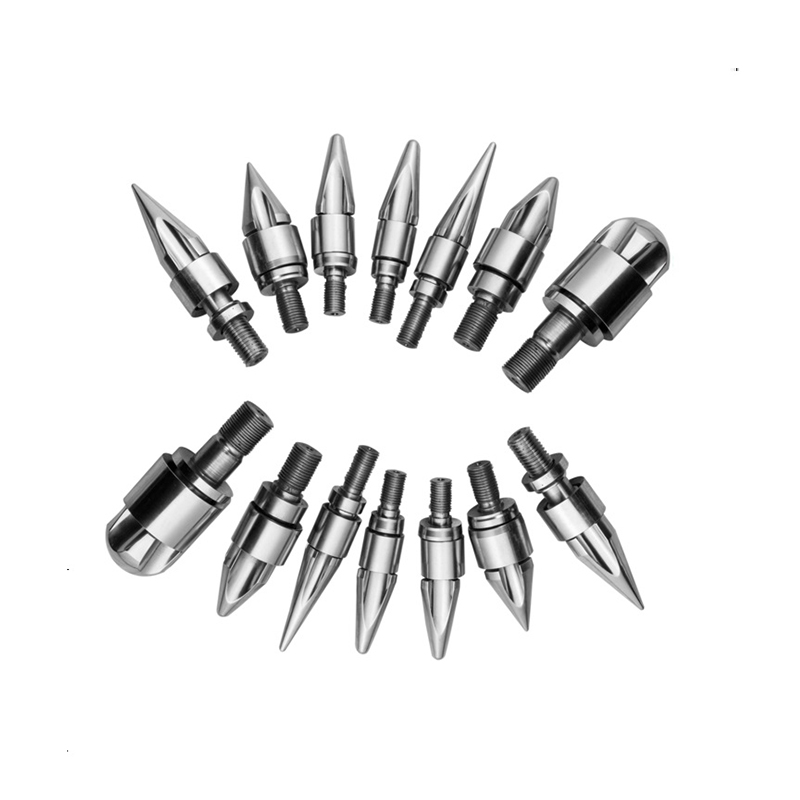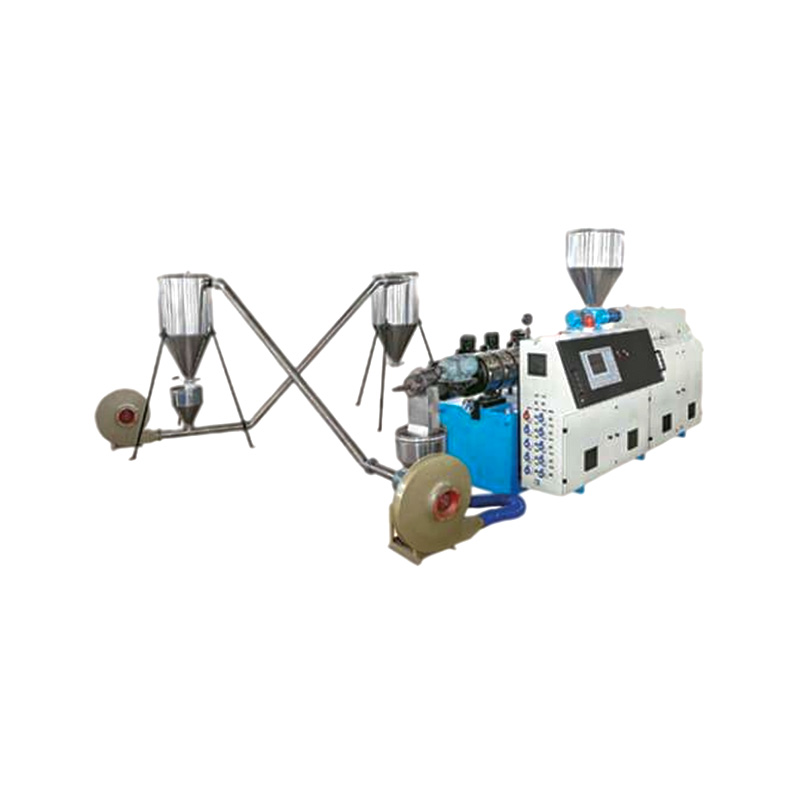1. Equipment Definition and Core Functions
A Plastic Pelleting Machine is an industrial device that processes plastic raw materials (including virgin, recycled, or scrap) into uniformly sized pellets (plastic granules) through a process of hot melting, extrusion, cooling, and cutting. Its core function is to transform the plastic material into a standardized raw material for subsequent molding processes such as extrusion, injection molding, and blow molding.
2. Core Workflow
Feeding: Plastic raw materials (chips, powder, or recycled material) enter the machine through a hopper.
Melting & Plasticizing: The raw materials are conveyed, sheared, and compressed by the rotating screw within the heated barrel, melting them into a uniform, viscous fluid.
Extrusion: The molten plastic, propelled by the screw, is extruded through a porous die plate (die) to form a continuous strand.
Cooling: The extruded plastic strands immediately enter a cooling water tank or pass through an air cooling device to solidify and set their shape.
Pelletizing: The solidified plastic strands are cut into uniform pellets of a predetermined length (typically 2-5 mm) by a high-speed rotating cutter.
Dewatering & Drying (if water-cooled): The water-cooled pellets are dehydrated using a centrifugal dehydrator or vibrating screen to remove surface moisture and, if necessary, dried.
Conveying & Collection: The finished pellets are transported to a storage silo or packaging unit via a conveyor belt or pneumatic conveying system.
3. Main Mechanical Systems
Drive System: The motor and reducer form the power source, driving the screw.
Extrusion System:
Barrel: A hollow cylinder with built-in heating and cooling devices (electric coils, water/oil cooling channels).
Screw: A core component, divided into functional sections (feeding section, compression section, homogenization/metering section), responsible for conveying, compressing, shearing, melting, and metering the plastic. Screw design (length-to-diameter ratio, compression ratio, and screw groove depth) determines plasticizing efficiency and material adaptability.
Die Head: Mounted at the end of the barrel, it contains a multi-hole die plate (the shape of the die holes determines the melt strand shape).
Heating/Cooling & Temperature Control System: Precisely controls the temperature of each barrel section and the die head to ensure material delivery at optimal melt viscosity. PID control is typically used.
Pelletizing System:
Pelletizing Chamber: Houses the cutter and die head.
Cutting Blades: High-speed rotating, sharp blades (the number, material, and angle of the blades affect cut quality).
Cutter Hub & Drive: Secures the cutter and provides independent power to drive its high-speed rotation (speed is adjustable).
Cooling System:
Water Bath: A cooling water bath (length, water temperature control, and water flow rate affect cooling efficiency).
Air Cooling: Fan and air duct.
Dewatering & Drying System (Water Cooling Required): Centrifugal dehydrator, vibrating screen, hot air dryer, etc.
Control System: PLC or microprocessor control with integrated operator panel (HMI) monitors and adjusts key parameters such as screw speed, cutter speed, zone temperature, water flow, and includes fault diagnosis capabilities.
4. Key Operating Technical Parameters
Screw Diameter: Determines the theoretical output range of the machine.
Screw Length/Diameter Ratio: The ratio of the screw's effective length to its diameter (commonly 20:1 to 36:1+), which affects plasticizing uniformity and mixing capacity.
Screw Speed Range: Affects output, shear heat, and material residence time.
Main Motor Power: Provides the power to drive the screw.
Cutter Motor Power: Provides the power to drive the cutter.
Heating Power: Provides the thermal energy required to melt the material.
Cooling Capacity: Ensures effective solidification of the extruded strands.
Theoretical Output: Estimated production capacity (kg/h) based on a specific material (e.g., LDPE) and operating conditions.
Pellet Size Specification: The range of diameters and lengths of pellets that can be produced.
Applicable Material Range: Defines the plastic types (e.g., PP, PE, PS, ABS, PVC, etc.) and forms (flakes, crushed material, powder, etc.) that can be processed.
5. Equipment Selection Considerations
Target Material Properties: Plastic type (thermoplastic), initial form (chips/powder/recycled material), melt index, thermal stability, and viscosity.
Required Output: The required output per unit time (kg/h).
Pellet Specifications: Target particle shape, size (diameter, length), and uniformity.
Cooling Method: Select water or air cooling based on material properties (e.g., PVC is water-sensitive) and subsequent process requirements.
Automation Level: Required automation integration for feeding, conveying, drying, and packaging.
Space & Energy Constraints: Equipment footprint and power, water, and gas consumption.
6. Safe Operation and Maintenance Specifications
Operational Safety:
Operators must receive professional training and be familiar with the equipment structure and emergency shutdown procedures.
Before starting the machine, check that the protective covers are in place, that fasteners are not loose, and that there are no foreign objects on moving parts.
Strictly avoid contact with hot or moving parts, such as the screw, die head, and cutter, while the machine is operating.
Strict temperature control is required when handling heat-sensitive materials (e.g., PVC) to prevent decomposition.
Maintenance:
Daily Maintenance: Clean the equipment (especially the hopper, cooling water tank, and pelletizing chamber), check lubrication points, and observe operating conditions (noise, vibration, and temperature).
Periodic Maintenance: Inspect/replace worn parts (cutter, die plate, screw/barrel bushings, drive belts/gears), clean the heating and cooling systems, calibrate the temperature control system, and check electrical safety.
Shutdown Maintenance: Thoroughly clean the screw, barrel, and die (using a dedicated cleaning compound) and perform preventive maintenance.



 عربى
عربى











